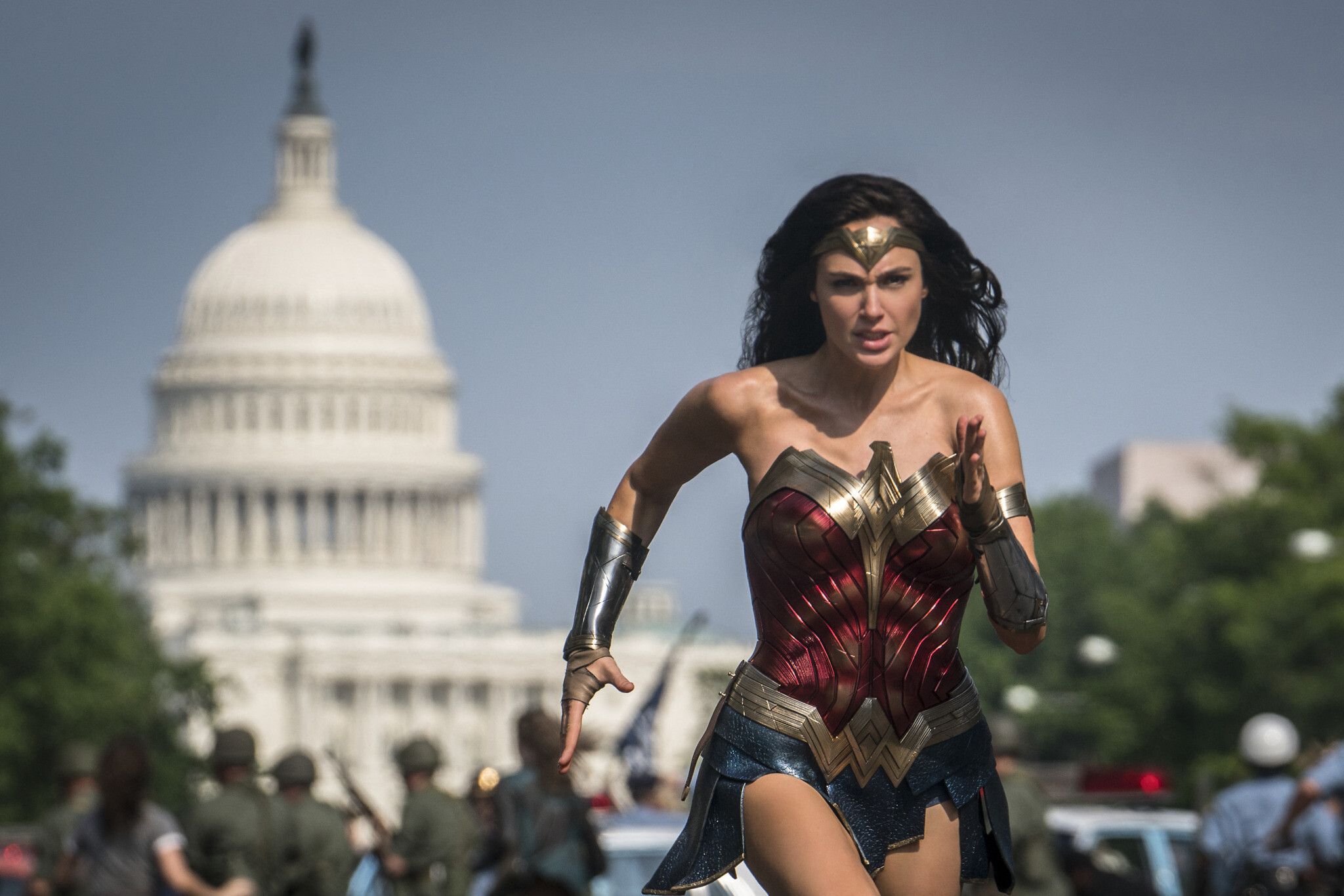Wonder Woman was a treat, wasn’t it? It’s truly special when a blockbuster can tap into something universal. After its release in 2017, viewers worldwide reported bursting into spontaneous tears at the same scene: Diana’s ascent into no man’s land, when she rose from the trenches of WWI and strode through a battlefield of bullets and cynical men. It wasn’t just that this was the first showcase of womanly resolve to grace the superhero genre in over a decade—a decade!—it was also that Patty Jenkins knew how to direct a scene that was a long time coming. It plays like a clenched fist and a sigh of relief at the same time. The no man’s land scene makes a stirring companion to Éowyn’s “I am no man” in The Return of the King, both triumphant catharses that allow a woman to dominate and exceed the reach of men in their own fictional kingdoms. It’s a high bar for a sequel to reach, which is probably why Wonder Woman 1984 never tries to.
The new Wonder Woman is a larger departure from its predecessor than any mainstream sequel in recent memory (sans Thor: Ragnarok, maybe, but that movie had to bring in a new director to change up the norm). Patty Jenkins is back in the director’s chair—with a screenplay credit this time, too—but this Wonder Woman takes the 1984 moniker seriously and goes all “new year, new me.” After an introductory flashback on Themyscira, the movie unfurls with an action scene at a lively 80s mall, and the vibe becomes decidedly retro. This isn’t the down-and-dirty thugs and very grey London of the first Wonder Woman: it’s bright, primary colors; baddies fumbling their weapons as bystanders gasp dramatically in unison; cute kids and superheroes winking at each other. It feels more like the Christopher Reeve Superman movies than anything—a cheesy, old-school romp with an acceptable amount of cheese, like an unhealthy meal you don’t mind having because it reminds you of the junk you ate as a kid.
The closest 1984 gets to a true Wonder Woman sequel is the resurrection of Steve Trevor, Diana’s supporting love interest. He may have, you know, exploded in the original, but he’s brought back to life by the thing that drives 1984’s entire plot: a rock that grants wishes. Death is a thing of yesteryear in the comic book world. It’s good to have Chris Pine and his limitless charm back—he’s the best of the American Chrises, after all—but putting him next to Gal Gadot’s Diana sure makes the latter look bad. Gadot had an excuse in the original Wonder Woman, when Diana was in a fish-out-of-water situation and her stiffness could be read as hesitation; but in 1984, Gadot meets the limits of her acting ability like a car meets a brick wall. She can still pull off that determined, optimistic face like she’s been practicing it, but anything more demanding than that is out of her wheelhouse at the moment. It would be no tragedy if she needed to be recast.
To be fair, it’s not like the script is doing her any favors. When you’ve got a wish-granting rock in the equation, the narrative possibilities are endless, and 1984 has trouble pulling a coherent story out of that infinity. Most of the major plot developments happen because no one considers the consequences of their actions. After villain Maxwell Lord gets his hands on the genie gem, he starts making large-scale decisions with massive geopolitical repercussions, but he seemingly has no strategy for keeping everything under control. He just does stuff, a plan of action that’s carried out just as thoughtlessly by the protagonists. The level of braindead that 1984 asks you to be is a big ask—it only gets a pass because its tone, special effects, and action sequences are throwbacks to an era of superhero movies when flying around the world really fast could turn back time. There’s a lot of dumb, but a decent amount of it is fun.
The movie’s second biggest ask is its two-and-a-half-hour runtime, which is insane for what’s essentially a cinematic fluff piece. This isn’t the culmination of twentysomething other movies; in fact, it makes no effort to connect to a wider universe at all (which—don’t get me wrong—is a good thing). The main reason it’s so long is because 1984 gives its two antagonists as much attention as its protagonists. This works well enough for Maxwell Lord: Pedro Pascal makes for a deliciously hammy villain and he’s clearly relishing the opportunity (though I’m already tired of blockbuster bad guys that are obvious stand-ins for Trump. Let’s buck that trend, please). It doesn’t work at all for Kristen Wiig’s Cheetah, a villain who could be removed from the story entirely without much issue. It’s a shame that Wiig is so underutilized—she out-acts the title character in her own movie. Maybe she’s given the character design of a Jellicle cat as punishment for that.
All in all, Wonder Woman 1984 has some good stuff here, some bad stuff there. It’s a middle-of-the-road superhero movie that people are too busy to obsess over. And that’s… refreshing, actually.
★★★ (3/5)




